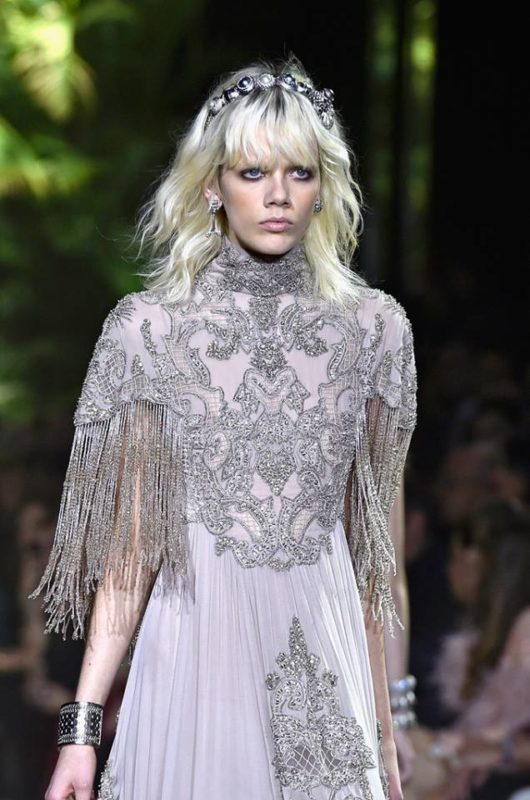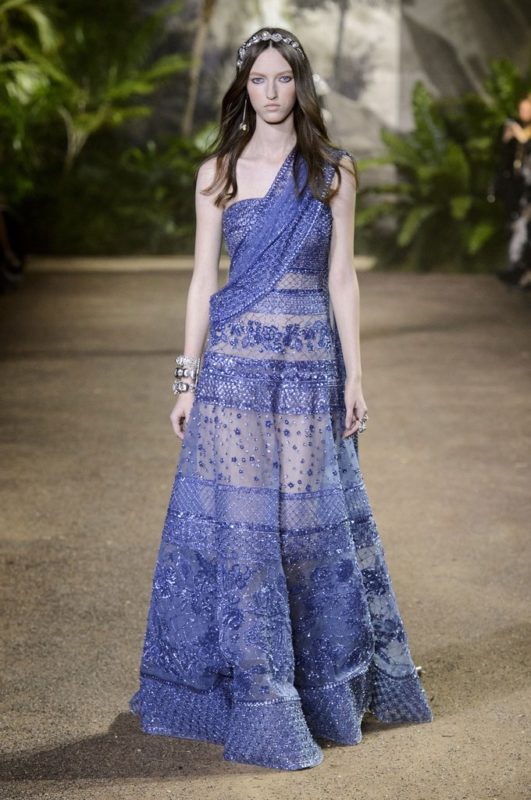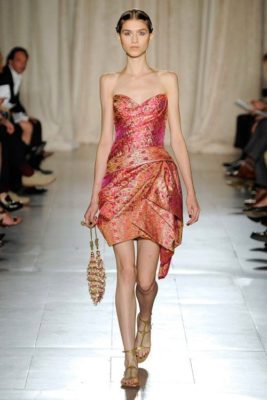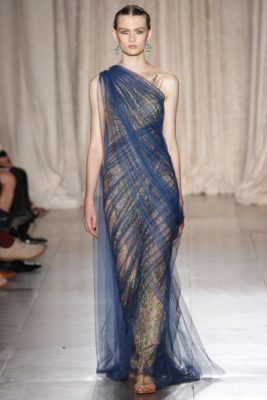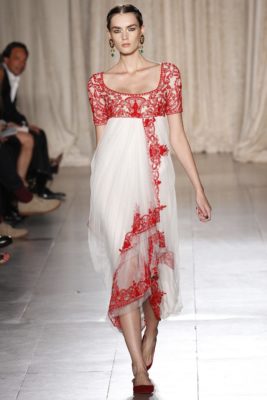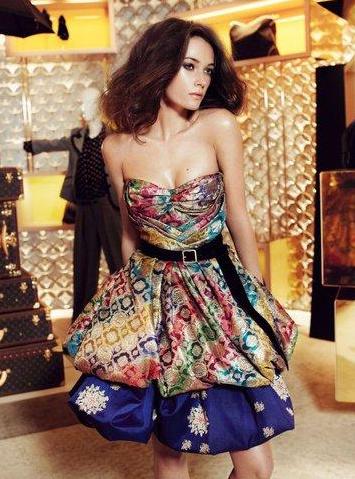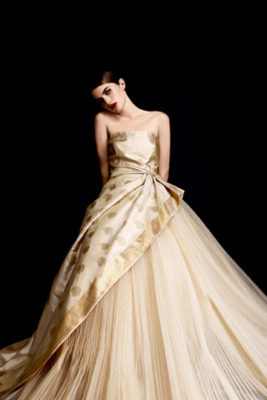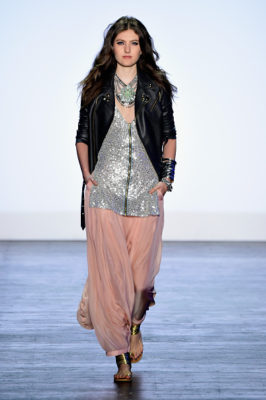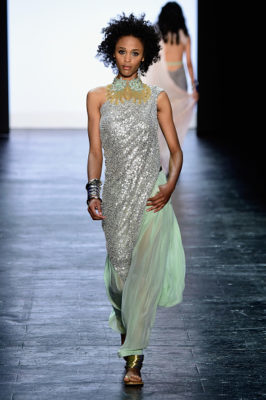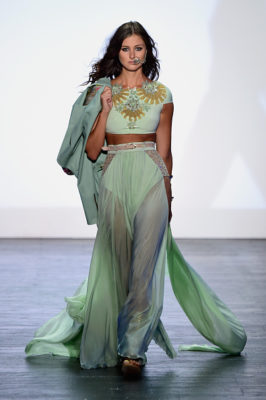Indian fashion remains one of the world’s most underrated forms of fashion. Most of the world thinks that Indian fashion is restricted to Sarees, Salwar Kameez and the occasional lehenga; but, the intricacy of Indian fashion goes far beyond that. This has come to the attention of International Fashion designers such as Elie Saab, Christian Dior, Burberry and DKNY, who have utilised Indian prints and textiles over the years, as well as emulate some of the traditional silhouettes in an exciting and modern way. Let’s take a look back at some of the exquisite designs created when culture meets high fashion!
Elie Saab, Spring 2016
In true Elie Saab nature, the Spring 2016 collection retains the delicacy and elegance of his past designs, but is further enhanced by the influence of colonial India. Although neutral in colour, the regality is enhanced due to the heavy Indian style embroidery and familiar draping of fabrics over the shoulder mimicking sarees and dupattas. The signature Elie Saab aesthetic of elegance is only accentuated by fitted colonial style necks and caped gowns in a fusion of Edwardian and Indian style.
Marchesa S/S 2013
Marchesa regularly pays tribute to Indian fabrics and textiles in their designs, being careful not to directly copy the silhouettes that are culturally significant. Instead, they put South Asian prints and patterns – like brocade and china silk, in vibrant colours like pink, red, blue – on western silhouettes. The inclusion of traditional features indicating origin creates an entirely new aesthetic.
The dress with navy blue tulle draped over the gold sequinned bodice is a beautiful re-interpretation of a sari. They have also combined culturally rich antique silk with the playful elegance of a cocktail party in their strapless saree cocktail dress. The red and white dress resembles an Anarkhali, with the red fitted embroidered top flowing down to the white tulle body, and a matching red border draping down to resemble the pleats of a saree.
Ryoko Haraguchi’s ‘Haath Heart’
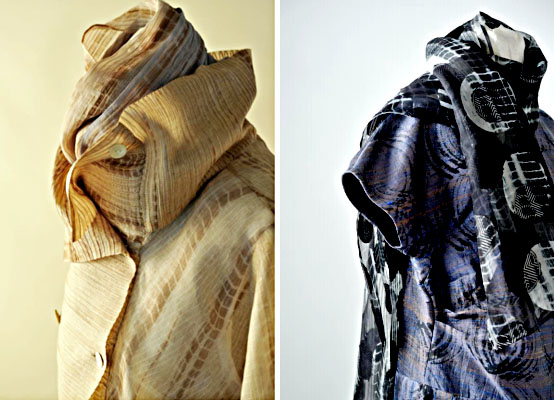
Ryoko Haraguchi’s love of textiles inspired her collection, ‘Haath Heart‘ at Artisans’, Mumbai in December 2016. She combines Indian weaving techniques and Japanese Dyeing techniques to create a unique garment that, despite India’s and Japan’s seemingly clashing approaches to clothing, results in a look that is delicate and full of culture.
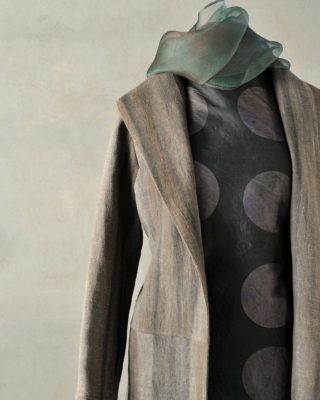
She revives the ancient arts of traditional Indian weaving, stitch work and dyeing techniques, using Kota Sarees and Indian silk as material for the ancient Japanese board dyeing technique, Itajime (board dyeing) and persimmon dyeing Kakishibu. Kakishibu is a dying art form, with Haraguchi telling blog Global Fashion Street that “It takes a long time to create each piece as everything is done by hand”.
According to the Indian Express, she describes her designs as,
“a blend of urban sensibilities, that which is comfortable and light, and high on the wearability quotient. Silk is often seen as something very heavy, but the way I use it, it is paper light.”
Louis Vuitton Diwali Collection 2010
Once upon a time, Indian Maharajas used to order trunks and luggage from a little company called Louis Vuitton. In 2010, the company decided to celebrate its historical connection to India by making the Diwali Collection.
Designer Marc Jacobs, the Creative Head of Louis Vuitton at the time worked with Rajeev Sethi, a pioneer in modernising Indian art, to repurpose vintage Indian Sarees sourced from Mumbai, Delhi, Chennai and Bangalore into skirts, dresses and shorts. The traditional thick borders are able to be seen even when the silk sarees are in dress form. Louis Vuitton also enlisted traditional Indian Craftsmen to help them create custom fabrics for the collection and to weave the Louis Vuitton logo into the fabric.
Burberry

The iconic Burberry trench coat was recreated with Maheshwari Silk, commonly used in sarees, replacing the boring beige for Vogue India’s Fiftieth Anniversary ‘Project Renaissance’. Christopher Bailey, Chief Creative Officer,
“wanted to take our iconic trench coat and play with its unique identity. Like the trench, the Maheshwari fabric has an incredibly rich history and heritage, which I find truly inspiring.”
Others brands involved in this project include Alberta Ferretti, who used a Kanchipuram silk saree as the centrepiece of an elegant ball gown, thus “reinterpret(ing) this beautiful fabric to realise something different from the traditional sari—I wanted to show [its] versatility, richness and allure.”
DKNY also incorporated Bishnupur Baluchari silk into their fitted black dress, with Donna Karan commenting, “The graphic red is so DKNY—vibrant, energised, colourful. It’s exciting to take something traditional and do something completely unexpected with it.”
Swapnil Shinde
It is not only Western designers that are experimenting with this fusion. India has been influenced by Western Culture just as much, if not more, than Western culture has been influenced by India. Rising designer to the Bollywood stars, Swapnil Shinde – of Project Runway fame – has also experimented with combining Indian textiles and patterns in modern trends.
In his ‘Decoy Collection’, created during Project Runway Season 14, he combined popular Indian silhouettes, resembling dhotis, lehengas, and saris, and combined them with minimalistic lines and solid colour. The inclusion of a handful of leather jackets, more prominent in western trends, gave stark contrast to the patterns and embroidery popular in Indian fashion. The result was a laid back, yet distinctly edgy look that is only enhanced by the culture emanating from the Indian influences visible.
Which of the designs did you like the best? Would you wear them? Let us know in the comments below!

